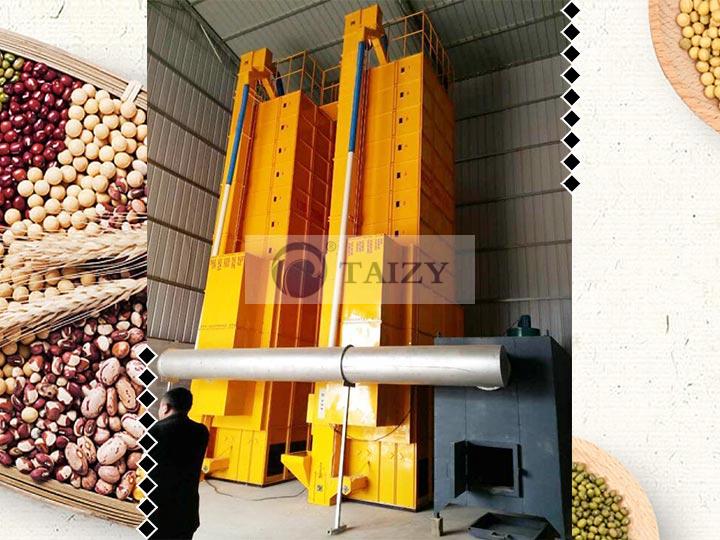Grain drying machine is used to dry all kinds of crops such as corn and rice. Due to the big size, it is not easy to check all the parts when you have any plan to buy one. How to choose a good grain drying machine?

According to the crop you want to dry
According to the variety and quantity of dried grain, you can use different grain drying machine for different varieties. For example, if your area is rich in wheat and rice, you can choose the mixed flow rice drying machine. For corn-based production areas, multi-stage downstream and high-temperature drying machine can be selected. For rice-based production areas, it is better to use low-temperature rice drying machine such as forward and backward flow or mixed flow type.
According to the amount of grain
Different grains have different drying processes and different drying temperatures. Depending on the amount of grain when drying, there are many skills that you need to know. If there are many varieties of grains, the quantity is small or the grains are scattered, you should choose a small circulating grain dryer or a small mobile grain dryer. If the variety is single with large quantity, and the drying period is short, you can select a large continuous grain dryer. Then how to operate and maintain the dryer after buying it?
Operation and maintenance of grain drying machine
1. The drying efficiency of the grain drying machine depends largely on the quality of the combustion chamber. Therefore, during the operation, you should pay much attention to the combustion chamber, the blower, and the dust removal and suction part.
2. Ignite the furnace one hour before starting the grain dryer, check all the auxiliary equipment including the various transmission parts and supporting parts, etc.
3. Check fuel, transmission support device, bearings, and friction surfaces before starting the dryer.
4. During the operation, the temperature of each part of the bearing should be checked frequently. It should not exceed 50 degrees. The gear sound response should be stable. The transmission, support and cylinder rotation should have no obvious impact and vibration
5. All bolts and fasteners should not be loose. Always pay attention to the contact condition of the blocking wheel and the tug. Windshield, gear cover should not have cracks and friction damage. All parts are lubricated regularly.
